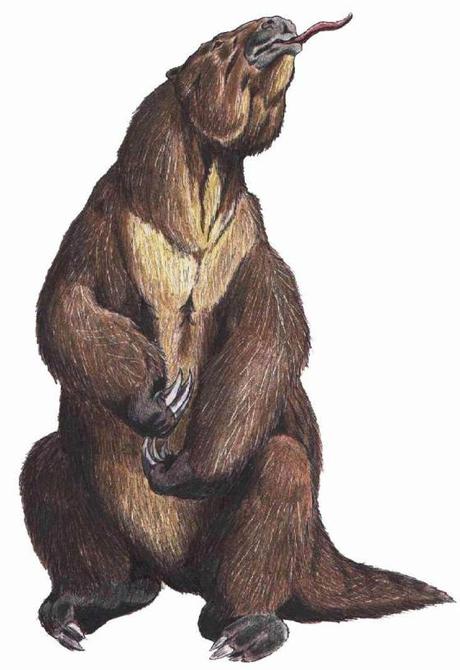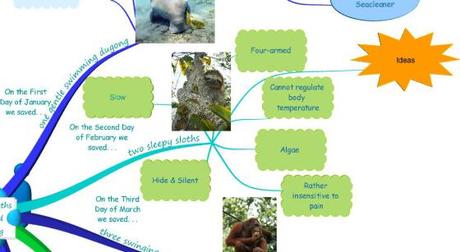Would it not be great to stretch time? How can we celebrate slowfulness?
William Beebe was a sloth researcher who was very impressed by the sloths' slowness. He wrote, "Sloths have no right to be living on this earth, but they would be fitting inhabitants of Mars, whose year is over six hundred days long."
Sloths have lived on the Earth for a very long time. Today's sloths are descendants of giant sloths who were the size of elephants. Palaeontologists think that humans were the reason that these giant sloths became extinct. So maybe we are given another chance to save these fascinating animals.
Bradypus pygmaeus, pygmy three-toed sloth, is a critically endangered species because of human threats and predators. They live in Isla Escudo de Veraguas, an island in Panama. The island has no inhabitants, but visitors hunt the sloths and sell their meat.

Some interesting facts about sloths.
- Sloths sleep for about 15 hours per day
- A four-armed and not a four-legged mammal. The limbs cannot carry their body weight.
- Sloths hide and remain silent when there is a danger.
- A male sloth often stays in the same tree for his entire life.
- The sloth, tree and algae are all part of each other. Part of this is also little ecosystem is the sloth moth who has formed a mutually beneficial relationship with the sloth.
- Sloths cannot unlike other mammals regulate their body temperature so they can only live in humid and warm places.
- Predators often find it difficult to find sloths when they are hanging in their trees.
- Sloths often look grey-green but they have brown-grey fur. They move so slowly that algae can grow on them! The sloths look like a clump of leaves or a branch covered with lichen. Fungi and beetles also live in their fur
- They are nocturnal.
- Sloths are herbivores and they munch on leaves, fruit and young twigs.
- Sloths have poor eyesight so a sloth does not look for its food. Instead, a sloth sniffs on leaves.
- It is quite insensitive to pain.
- The sloth's neck is very flexible.
Some of the information about sloths has been added to the mind map. We will use this as inspiration for our think dive into the world of sloth slowness.
What ideas do you get when you think about sloths?
